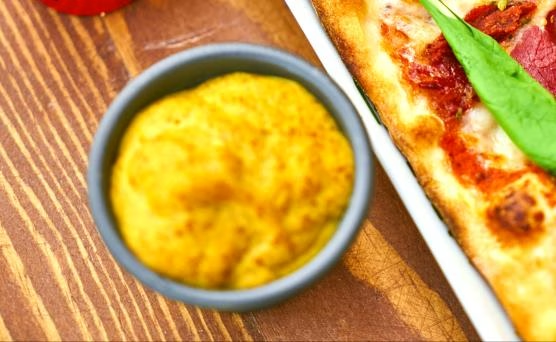The main ingredients of mustard are mustard seeds, along with vinegar, water, salt, and other spices. To help you better understand mustard, today we’ll introduce several different types, their uses, and nutritional value, as well as teach you how to make your own.
Common Mustard Types
The main ingredient in mustard is mustard seeds. Mustard seeds can be broadly divided into three types: yellow, brown, and black. These seeds are all from the mustard plant, and different colors have slightly different flavors. Generally, the darker the mustard seeds, the stronger and spicier the mustard.
Common supermarket mustard types include the following:
Yellow Mustard
The most common and popular mustard on the market is mostly made from yellow mustard seeds. Simply mix yellow mustard seeds with water, vinegar, salt, and turmeric to create a delicious yellow mustard sauce that can be added to burgers, hot dogs, sandwiches, and more.
Honey Mustard
Mix honey and yellow mustard in a 1:1 ratio. Honey mustard is ready and can be used as a spread, dip, salad dressing, or other sauces.
Dijon Mustard
Dijon mustard, typically made with shelled black mustard seeds, is often blended with wine, salt, and other spices. It has a rich and complex flavor. It can be used on its own or mixed into other sauces, especially mayonnaise.
Brown Mustard
Brown mustard is typically made by grinding the brown mustard seeds (see picture below) and mixing them with other ingredients to create a pungent, grainy sauce. This mustard is ideal for pairing with meat or meat-based sandwiches, and is also commonly used in Indian cuisine.
Mustard Seed Paste
Less processed mustard seed paste has a thicker texture and contains more whole or lightly crushed mustard seeds, giving it a stronger flavor and being considered more nutritious.
Mustard Benefits
Mustard paste contains several beneficial minerals, such as iron, selenium, calcium, and phosphorus, and is generally low in calories.
Mustard paste is also rich in glucosinolates, isothiocyanates, carotenoids, and other plant compounds that may help reduce the risk of chronic disease and protect against free radical damage to cells.
Glucosinolates, mentioned earlier, are naturally present in many spicy plants and are responsible for their spiciness. Therefore, the darkest black mustard seeds are richest in glucosinolates, which help protect the body from oxidative stress.
Many mustards, especially yellow mustard, also contain turmeric, which contains a high amount of curcumin. Turmeric has been shown to have anti-inflammatory properties and is believed to help prevent chronic inflammatory diseases such as diabetes and heart disease. Scientists also believe it can maintain normal brain function, improve memory, and reduce the risk of brain-related diseases.
How to Make Homemade Mustard Sauce
Ingredients:
1 tablespoon yellow mustard seeds
1 tablespoon brown mustard seeds
3 tablespoons apple cider vinegar
30ml drinking water
1 pinch of salt
Instructions:
Soak the yellow and brown mustard seeds in apple cider vinegar overnight.
Place the soaked mustard seeds, drinking water, and salt in a food processor and blend until the consistency is reached.
For a sweeter mustard sauce, add honey or brown sugar and blend until smooth.
Leftover mustard sauce can be refrigerated and will keep for about 2-3 days.


Leave a Reply